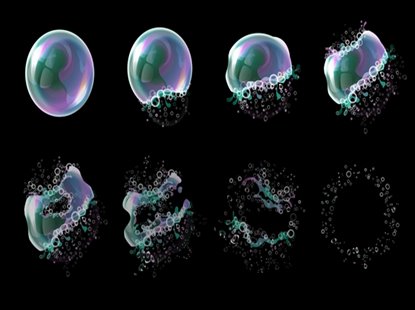Benefits of Using Defoamers to Enhance Operational Efficiency
Benefits of Using Defoamers to Enhance Operational Efficiency
Blog Article
Choosing the Right Defoamer for Your Certain Application Demands
Picking the appropriate defoamer for certain application needs is a nuanced process that requires cautious consideration of numerous elements, such as the foam medium, type, and operating conditions. Recognizing the nuances of defoamer efficiency-- consisting of rate and persistence-- while likewise accounting for regulative and ecological elements is critical.
Comprehending Foam Development
Foam development takes place when gas is entraped within a liquid, creating a steady structure of bubbles. This sensation can significantly influence various commercial procedures, specifically in industries such as food production, drugs, and wastewater therapy. The visibility of foam can prevent blending, minimize product top quality, and also result in operational inefficiencies.
Foam normally creates as a result of a mix of elements, including surface-active representatives, frustration, and the qualities of the fluid stage. Surfactants reduced the surface stress of the fluid, promoting the development of bubbles that can integrate and maintain. Anxiety, whether from mechanical stirring or gas introduction, boosts bubble development, bring about boosted foam quantity.
Comprehending the mechanics of foam formation is critical for sectors intending to maximize their processes. By determining the certain conditions that advertise foam generation, organizations can apply methods to mitigate its impacts.
Sorts Of Defoamers Available
Various sorts of defoamers are available to attend to the challenges positioned by foam in commercial applications. defoamers. Broadly categorized, defoamers drop right into 3 categories: silicone-based, non-silicone-based, and natural defoamers
Silicone-based defoamers are renowned for their efficiency and stability across a vast array of temperatures and pH levels. They are commonly used in applications where solid foam suppression is required, such as in adhesives, coverings, and paints. Their low surface tension permits fast foam collapse.
Non-silicone-based defoamers, frequently made from organic substances, offer a choice for applications conscious silicone deposits. These defoamers can be further split right into polyether and ester types, each customized to satisfy particular solution needs. Non-silicone defoamers are frequently utilized in food handling and personal care products due to their compatibility with various formulations.
Natural defoamers, derived from plant or animal sources, are gaining traction due to their environmentally friendly profile. These products are particularly appealing in applications where regulatory compliance and sustainability are critical, such as in agrochemicals and biotechnology.
Choosing the best kind of defoamer is critical for maximizing efficiency and making sure compatibility with details applications.
Key Application Considerations
When picking a defoamer, it is necessary to take into consideration the certain application demands to make sure optimum efficiency. defoamers. Various sectors have unique requirements, such as food processing, pharmaceuticals, or wastewater therapy, and each application may need unique defoaming buildings
Key factors to assess consist of the tool in which the defoamer will certainly be utilized, whether it is water-based, oil-based, or a combination thereof. The temperature level and pH levels of the application can additionally greatly affect the efficiency of a defoamer. Additionally, compatibility with various other chemicals present in the system go to my blog is essential to avoid damaging reactions that can jeopardize efficiency.
Another vital factor to consider is the foaming actions of the particular system. Recognizing whether the foam develops promptly or slowly can lead the choice of a defoamer that targets the source effectively. The desired rate of defoaming can influence the selection, as some applications require fast activity while others might tolerate slower defoaming procedures.
Lastly, regulatory and environmental factors to consider ought to not be overlooked, especially in industries with strict conformity demands. Selecting a defoamer that straightens with these variables makes sure both effectiveness and safety in the application.

Efficiency Testing Techniques
Examining the performance of a defoamer needs a systematic approach to screening that properly determines its efficiency in particular applications. Various efficiency testing methods can be employed to identify the optimum defoamer for a provided solution.
One common approach is the bubble test, which evaluates the defoamer's capacity to decrease foam volume over time. This test entails producing a steady foam and then including the defoamer to observe the price of foam collapse.

Inevitably, selecting the appropriate performance testing method depends on the particular application and the kind of foam being resolved. Each method provides useful information that can lead formulation adjustments and enhance the effectiveness of the defoamer in practical applications.
Best Practices for Option


Following, take into consideration the defoamer's efficiency in regards imp source to speed of activity and perseverance. A quick-acting defoamer might be necessary for processes where quick foam reductions is crucial, while a more relentless formulation might be needed for extended foam control. Additionally, assess the environmental impact of the defoamer, including its biodegradability and any regulatory compliance requirements.
Conduct trials with picked defoamers to determine their efficiency in real-world conditions. By adhering to these finest methods, you can boost foam control effectiveness and guarantee the durability of your procedures.
Conclusion
In summary, choosing the ideal defoamer necessitates an extensive examination of read here different factors, including foam type, medium, operating conditions, and environmental considerations. Comprehending the one-of-a-kind characteristics of foam formation and the available defoamer options is vital.
Picking the ideal defoamer for specific application needs is a nuanced process that demands cautious consideration of several variables, such as the foam tool, kind, and operating problems.Picking the right defoamer is important for attaining optimal efficiency in foam control applications. A quick-acting defoamer might be needed for procedures where fast foam suppression is crucial, while a much more consistent formula may be needed for prolonged foam control.In summary, selecting the ideal defoamer requires an extensive evaluation of different elements, consisting of foam kind, medium, operating problems, and ecological considerations. Understanding the one-of-a-kind attributes of foam formation and the available defoamer alternatives is vital.
Report this page